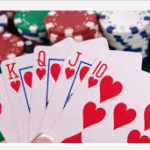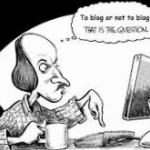What is a Unicorn?
Posted By Cliff Tuttle | July 4, 2019
No. 1,632

I’ve been running across references to unicorns in books, blog posts and even in the funny papers. Sometimes the author assumes we know what she is talking about or explains the term in a cursory fashion.
In her book, Insight, therapist Tasha Urich used the term “unicorns” to discuss people who greatly improve their self awareness and through this insight achieve success in life. But, when reading this, I remembered other references to unicorns and wondered whether there is a common denominator.
We all know about the mythical beast, usually depicted as a white horse, but occasionally as a goat. Even ten year olds know that these are a product of the imagination.
Unicorns are a rare and wonderous phenomenon. In literature and fable it is associated with feminine virtue such as innocence.
Unicorns in fairy tales and other fantasy stories are magical. They are, for example, important figures in the Harry Potter saga. Lord Voldemort was kept alive by drinking unicorn blood, a mystical, silvery substance. Later, it was used in a potion to create a temporary body for Voldemort. But a person who consumed unicorn’s blood thereafter lived a cursed life. Unicorns could be found in the Forbidden Forest near Hogwarts.
In twenty-first century America, unicorns inhabit the forbidden forest of finance.
According to Wikipedia, “a unicorn is a privately held startup company valued at over $1 billion. The term was coined in 2013 by venture capitalist Aileen Lee, choosing the mythical animal to represent the statistical rarity of such successful ventures.” Examples are Juul Labs, Air BNB and SpaceX. Uber, Facebook and Pinterest are successful former unicorns that are now publicly traded. It is strongly associated, although not exclusively, with the Silicon Valley. Outside the US, the largest number, by far, are found in China.
In various street-language sources, a unicorn is a young, single, sexually adventurous, bisexual female who wants desperately to live with and love a male/female couple. This phenomenon is so rare, according to the Urban Dictionary, that most people have never seen one. I’ll bet!
If a lawyers were asked to suggest a legal unicorn, some might suggest “punitive damages.” Litigants are always asking (or praying) for them, but they are so rare that most have never personally had a case involving an actual award of punitive damages. It requires that the conduct of the defendant be malicious, willful, wanton, outrageous and shocking. You may be aware that an Ohio jury recently awarded punitive damages against Oberlin College in the now-infamous Gibson’s Bakery case.
On November 9, 2016 a student at the College shoplifted three bottles of wine from the Bakery. An employee pursued him on foot. When the police arrived, two students had come to rescue the defendant and when the police arrived they were in the process of beating up the store employee. The thief and his rescuers plead guilty to assault and that should have been the end of the story.
But it wasn’t, a student protest and boycott of the bakery erupted. They alleged (without any convincing evidence) that the bakery was engaged in racial profiling — the thief was black. Again, that should have the end of the story. But Oberlin got involved in supporting the protest and boycott, printing signs, participating in the march and actively endorsing the boycott. When the jury returned a verdict, it awarded a substantial amount of both actual and punitive damages. They thought that the conduct of Oberlin, trying to run the bakery out of business, was outrageous. They awarded millions in 13 million in actual damages and three times that amount in punitive damages. The punitive damages were later substantially reduced because they exceeded the amount allowed by Ohio law. Legal Insurrection, a conservative-leaning legal blog contains a more detailed discussion.
Punitive damages are pretty rare, but there is a way to get the equivalent in a consumer civil suit. The Unfair Trade Practices Consumer Protection Law authorizes exemplary damages up to treble damages plus attorney’s fees. It applies to a host of consumer protection statutes involving home improvement contractors, home inspectors and many others.
CLT



